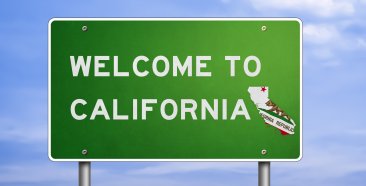
In every state, you are required to have liability auto insurance. One party is labeled at-fault when you are in a car accident, which means they are responsible for causing the accident. Both parties make a claim on the at-fault person’s insurance. While this system seems the most natural, a handful of states have what is called no-fault insurance. How does no-fault insurance work?
In the 1970s, some states started passing no-fault insurance laws. In this system, drivers make claims to their own insurance for injuries and damages regardless of who caused the accident.
The purpose of no-fault laws was to improve the car insurance system and avoid the lengthy back and forth between insurance companies and injured parties. It also eases the need for lawsuits with excessive damages.
No-fault states may also restrict the right to sue. However, motorists still have the right to sue in instances of severe injuries and damages for pain and suffering.
Which States Have No-Fault Insurance
Currently, 12 states are considered no-fault states. There are an additional 8 states, plus Washington D.C., where you can choose some type of no-fault insurance.
Check with your state’s DMV or with your insurance agent about which types of coverage are required in your state and which are optional.
What Does No-Fault Insurance Cover?

No-fault insurance, also known as personal injury protection, covers bills due to bodily harm for you and any passengers. When your accident incurs a medical expense, PIP eases the burden on you to pay those bills. No-fault insurance works by covering you if there is a collision with an object, like a deer or lamp post, or if there’s no other driver, like if you drive off the road.
This system is improved over typical liability insurance because it provides relief even when there’s no other driver to compensate you or if the other driver’s insurance doesn’t cover all your medical bills. In this case, it can provide relief faster than a lawsuit, too.
Check with your insurance company, but your no-fault insurance might also cover:
Loss of wages: If your injury causes you time away from work, no-fault insurance can help you through your recovery time.
Health insurance deductibles: If your health insurance has a deductible before it covers your health costs, PIP could pay for that deductible.
Funeral expenses: Unexpected funeral expenses can be costly, and one of the last things you would want to deal with after an accident. Some no-fault insurance covers those expenses.
What Is Not Covered by No-Fault Insurance?
There are limitations to the type of claims you can make on no-fault insurance.
No-fault insurance only covers injury-related expenses. It does not replace collision coverage, which covers your car if it is damaged in an accident. Check your auto insurance policy to see if you have collision insurance.
It does not cover damage to other people’s property. Property damage liability insurance is required in many states, and if not, the extra coverage is worth it.
Your vehicle is not covered due to theft or non-accident related damage. Comprehensive coverage helps to pay for your car when it is stolen.
Get the Insurance You Need at Freeway Insurance
Accident expenses can add up quickly without enough coverage. In addition to repairs, accidents may require a doctor’s visit, hospital visit, and even a lengthy recovery time. No-fault insurance can help you pay for some of those costs. Visit us online, at an office near you, or call us at (800) 777-5620 to discuss your no-fault insurance options today.



